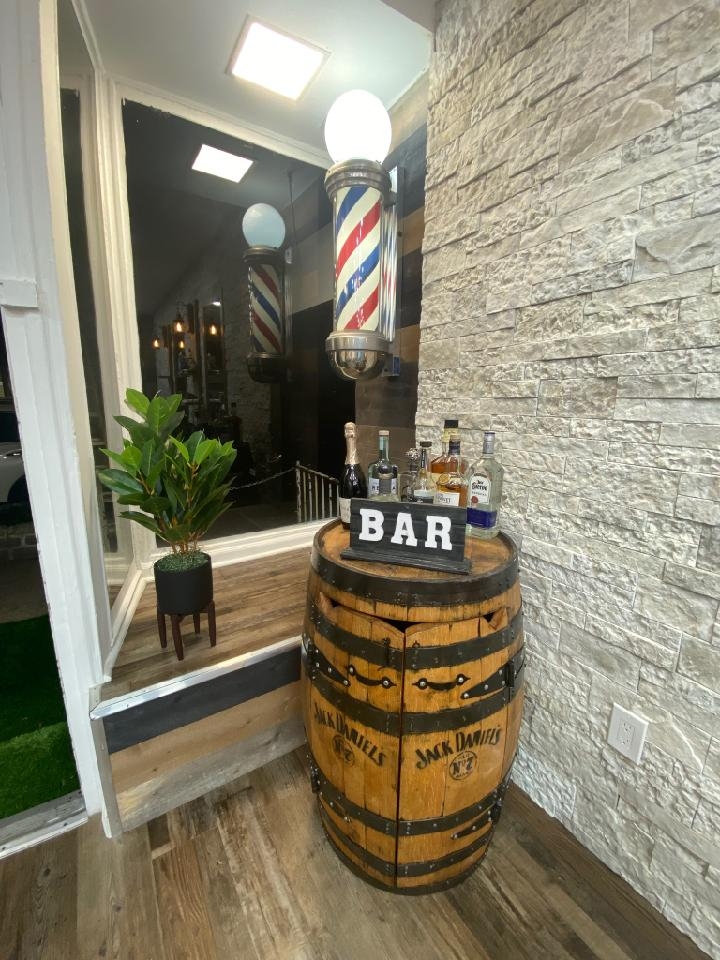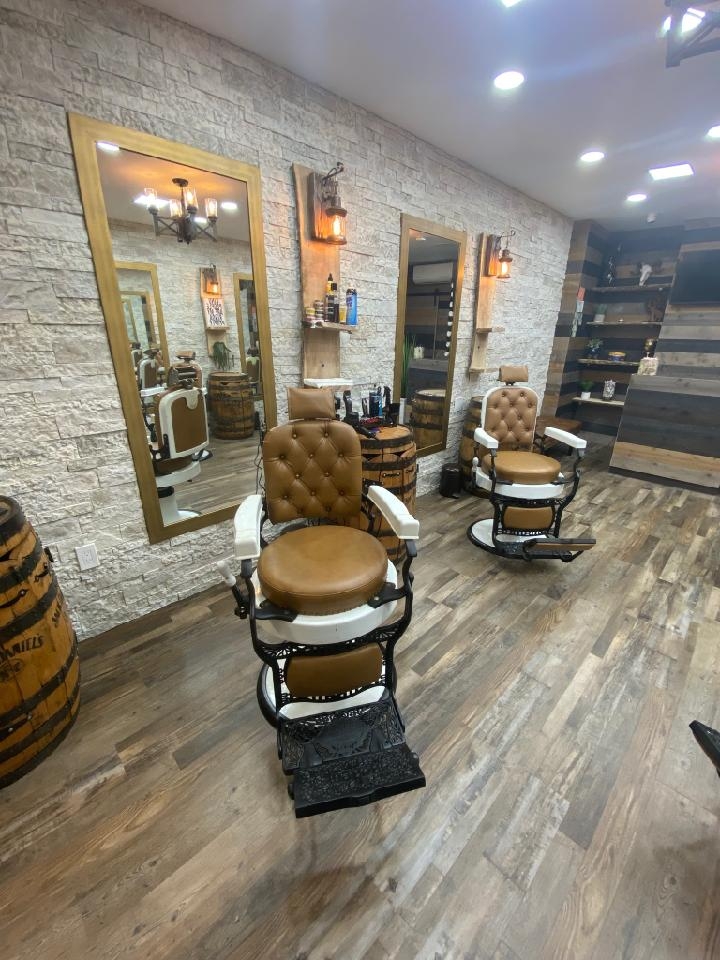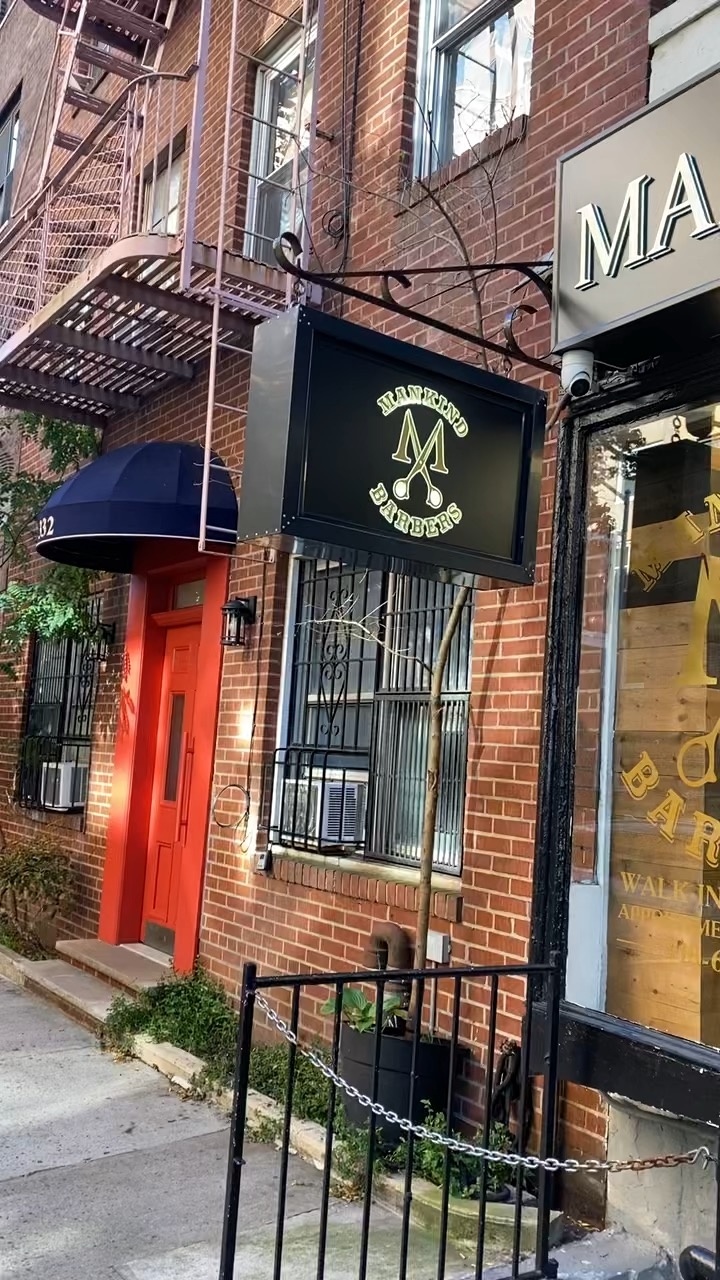

Barber clipper blade guards come in a variety of sizes to accommodate different hair lengths and styles. Common sizes include #1 (1/8 inch), #2 (1/4 inch), #3 (3/8 inch), #4 (1/2 inch), #5 (5/8 inch), #6 (3/4 inch), #7 (7/8 inch), and #8 (1 inch). These sizes allow barbers to achieve precise and consistent cuts for their clients.
Attaching a barber clipper blade guard to a clipper is a simple process that involves aligning the guard with the blade and snapping it into place. Most guards are designed to fit securely onto the clipper, ensuring that they stay in position during use. It is important to make sure the guard is properly attached before starting a haircut to prevent any accidents or uneven cuts.
Following a devastating fire, Edinburgh based barbershop Sink and Anchor were forced to completely overhaul their premises. We caught up with the owners to find out one barbershop built back better… When did Sink and Anchor re-open? We re-opened on Tuesday 15 August 2023. The refurbishment took place due to unforeseen circumstances. Can you tell The post How One Barbershop Built Back Better appeared first on Modern Barber.

Posted by on 2024-03-15
We chatted to barber Jon Dryer about some of the most memorable locations he’s cut hair, and where he would like to go next… How did your career start? I had odd jobs growing up, but I knew I needed to get a real career. I knew I didn’t want to do anything that involved The post Cutting in Extreme Locations with Jon Dryer appeared first on Modern Barber.

Posted by on 2024-03-15
Trying to get your work into the press can be a daunting task, especially when you work solo as a freelance barber – which is why we’re sharing these nine tips on how to secure press coverage… Invest Time Sending emails out to magazines, newspapers and sites on a regular, consistent basis increases the likelihood The post Tips for Getting Press Coverage as a Freelance Barber appeared first on Modern Barber.
Posted by on 2024-03-15
Book your tickets for the Modern Barber Awards and join us for a night of barbering inspiration. It’s time to mark your calendars and get your tickets to this year’s awards ceremony at the Telford International Centre on Sunday 23 June – coinciding with our unmissable event, Barber Connect. The evening promises a to be The post Have You Booked Your Tickets For The Modern Barber Awards? appeared first on Modern Barber.
Posted by on 2024-03-13
There are specific blade guards designed for different types of hair textures and lengths. For example, guards with longer lengths are ideal for creating layered cuts or leaving more length on top, while shorter guards are suitable for achieving a close buzz cut. Barbers can choose the appropriate guard based on the desired style and the client's hair type.

Barber clipper blade guards are typically universal and can be used on most types of clippers. However, some brands may have guards that are specifically designed to fit their own clippers. It is important to check compatibility before purchasing a blade guard to ensure it will work with the clipper being used.
To keep barber clipper blade guards clean and in good condition, it is recommended to regularly remove any hair or debris that may accumulate between the teeth of the guard. This can be done by using a small brush or comb to gently clean the guard after each use. Additionally, storing the guards in a clean and dry place can help prolong their lifespan.

Barber clipper blade guards are commonly made of plastic, which is lightweight and durable. Some guards may also be made of metal for added strength and longevity. The material used for the guard can impact its performance and durability, so it is important to choose a guard that meets the specific needs of the barber.
When using barber clipper blade guards, it is important to follow safety precautions to avoid accidents or injuries. Barbers should always ensure that the guard is securely attached to the clipper before use to prevent it from coming loose during a haircut. Additionally, it is important to handle the clipper with care and avoid applying too much pressure when cutting hair to prevent any accidental cuts or nicks. By following these safety guidelines, barbers can use blade guards effectively and safely.

The frequency at which one should replace the blades on their barber shears depends on several factors, including the frequency of use, the type of hair being cut, and the maintenance routine followed. In general, it is recommended to replace the blades every 6-12 months for optimal performance. However, for barbers who use their shears daily or work with thicker, coarser hair types, more frequent blade replacements may be necessary to ensure clean, precise cuts. Regular sharpening and cleaning of the blades can help extend their lifespan, but eventually, the blades will wear down and need to be replaced to maintain the quality of the cut. It is important to monitor the sharpness and condition of the blades regularly to determine when replacement is needed.
Using a shaving mug offers several benefits compared to a shaving bowl. The mug provides a more secure grip for the user, allowing for better control and precision during the shaving process. Additionally, the mug typically has a handle, making it easier to hold and maneuver while lathering up the shaving cream. The narrow opening of the mug helps to contain the lather, preventing it from spilling out and creating a mess. The design of the mug also helps to keep the lather warm for a longer period, providing a more comfortable and luxurious shaving experience. Overall, the shaving mug offers convenience, functionality, and improved performance for those looking to achieve a smooth and clean shave.
Carbon steel barber scissors and stainless steel barber scissors have several key differences. Carbon steel scissors are known for their high hardness, which allows for a sharp and precise cut. However, they are more prone to rust and corrosion compared to stainless steel scissors. On the other hand, stainless steel scissors are resistant to rust and corrosion due to the presence of chromium in the alloy. This makes them more durable and low-maintenance. Additionally, stainless steel scissors are less likely to stain or tarnish over time. While carbon steel scissors may require more frequent sharpening, stainless steel scissors tend to hold their edge for longer periods. Overall, the choice between carbon steel and stainless steel barber scissors depends on the user's preference for sharpness versus durability and maintenance.
When it comes to removing hair clippings, the best type of neck duster to use is a professional barber neck duster. These neck dusters are specifically designed for removing hair clippings from the neck and shoulders after a haircut. They are typically made with soft bristles that are gentle on the skin but effective at sweeping away hair. Some popular options include neck dusters with ergonomic handles for easy grip, anti-static properties to prevent hair from sticking, and washable bristles for easy cleaning. Overall, investing in a high-quality barber neck duster can help ensure a clean and comfortable experience for both the barber and the client.
Using a straight razor for detailing offers several benefits compared to other tools. The sharp blade of a straight razor allows for precise and intricate detailing, making it ideal for creating clean lines and sharp edges. Additionally, the single blade design of a straight razor reduces the risk of accidentally cutting or nicking the surface being worked on. The weight and balance of a straight razor also provide better control and maneuverability, allowing for more accurate and controlled movements. Overall, the use of a straight razor for detailing results in a professional and polished finish that is difficult to achieve with other tools.
Hair thinning shears and regular barber shears are both essential tools in a hairstylist's kit, but they serve different purposes. Hair thinning shears, also known as texturizing shears, have teeth on one or both blades that are designed to remove bulk from the hair without altering the overall length. These shears are ideal for creating texture, blending layers, and reducing the appearance of thick, heavy hair. On the other hand, regular barber shears have two sharp blades that are used for cutting hair with precision. These shears are typically used for creating clean lines, shaping haircuts, and trimming ends. While both types of shears are necessary for a variety of cutting techniques, it is important for hairstylists to understand the differences between them in order to achieve the desired results for their clients.